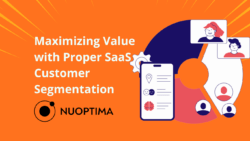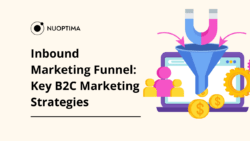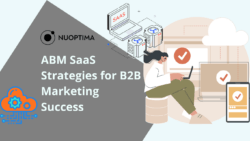GTM strategies are becoming increasingly important for businesses looking to launch new products or penetrate new markets. They go beyond mere marketing tactics and instead encompass a comprehensive approach to product launching and market entry.
In this article, we’ll delve into the significance of GTM strategies, the benefits they offer, and real-life examples of companies that have implemented them successfully. In addition, we’ll provide eight practical ways to craft a GTM strategy that drives tangible results and propels your business toward success.
If you want to explore even more detailed insights, check out this video from NUOPTIMA’s Founder, Alexej Pikovsky, who shares his personal understanding of GTM strategies, eight ways to create one, and his three favorite approaches that are currently proving highly effective.
What Is a GTM Strategy, and Why Is It Important?
First off, let’s talk about why a GTM strategy is such a big deal. Imagine you’ve come up with a game-changing product or service that is innovative, sleek, and ready to revolutionize the market. However, the catch is that no matter how groundbreaking your product is, it won’t sell itself. Assuming that it will is one of the top mistakes founders make in B2B SaaS startup marketing.
In reality, there needs to be a way to get this product to the market and have it attract your target audience. Now that you know this, the definition of a GTM strategy sounds pretty straightforward. It is a comprehensive plan that outlines how a company will reach its target customers and gain a competitive advantage.
GTM Strategy Framework
The key to a successful GTM strategy is to answer three fundamental questions:
- Where to play?
- What to sell?
- How to engage?
Let’s take a look at each one.
1. Where to Play?
This is all about identifying your playground – the market where your product fits perfectly. However, it’s not just about choosing a market. You also need to have a thorough understanding of the market dynamics. You should be able to ask and answer these questions:
- Who are the players? This involves gaining in-depth knowledge of your competitors, especially those leading the market.
- What are the rules? What general principles tend to lead to success? For example, does a subscription-based or pay-per-use pricing model work best in this market?
- And most importantly, who are you playing for? That is, who is your target market, and what does your ideal customer look like? This is where you should get laser-focused on who your product is intended for and why they would be unable to live without it. By doing so, you can position your product in a way that resonates with your target audience, making it more likely to succeed in the market.
2. What to Sell?
This goes beyond listing the features of your product or service. It’s about defining its unique value proposition. You should be able to answer the following questions:
- What sets my product apart from others in the market?
- Why should customers choose my product over the competition?
- How does my product align with the values and priorities of my target audience?
- Can I quantify the value my product delivers in terms of cost savings, efficiency gains, or other measurable outcomes?
Essentially, this is where you showcase your product’s strengths. More than just highlighting what your product does, you should be able to communicate how it makes your customers’ lives better, easier, or more enjoyable.
3. How to Engage
After identifying your target market and your product’s unique value, the final step is determining how to engage. This is where you decide the best ways to get your message out there and connect you with your audience. You can choose from a variety of channels, such as digital marketing, social media, direct sales, or a combination of these.
However, know that it’s not enough to just reach your audience; you need to engage them, capture their attention, and convince them to believe in your product as much as you do.
So, why is all of this so crucial? Because in today’s fast-paced, highly competitive market, having a killer product isn’t enough. You need a strategy that not only introduces your product to the market but does so in a way that’s effective, efficient, and, above all, impactful.
Benefits of Having a Go-To-Market Strategy

Now that you know what a GTM strategy is and why it’s important, let’s look into some of the benefits of having one when launching a product or entering a new market.
Optimized Resource Allocation
A well-crafted GTM plan will help you identify and prioritize the markets, customer segments, and promotional and distribution channels that will give you the best return on investment (ROI). This allows you to effectively allocate your resources and reduce any unnecessary waste.
Better Understanding of Customers
A GTM strategy requires conducting extensive market research to gain insights into the needs and preferences of your customers. By gaining a deeper understanding of your users, you can better align your offerings to meet demand. This data can also help you improve your marketing efforts and guide your future product and feature development, ultimately leading to long-term customer satisfaction.
Faster Market Entry
Having a good GTM strategy can also help you determine the most efficient approach to enter the market quickly. When creating your strategy, you’ll get to identify your target audience, prioritize the steps necessary to bring your product to them and refine your product positioning and messaging from the start, which can significantly reduce your time-to-market. This is particularly important since entering the market early can set you up to be a category leader rather than struggling to catch up with competitors.
Growth Opportunities
A good strategy can significantly increase a business’s growth potential. By having access to comprehensive market data and a streamlined process for product launches, companies can easily adapt to changing market dynamics, capitalize on emerging trends, identify and seize growth opportunities, and speed up market expansion.
Examples of GTM Strategy Success Stories
Let’s examine successful GTM strategies employed by different companies and how they implemented them.
Ramp

Ramp, the corporate card and bill payment platform, had a unique GTM plan that involved offering their expense management software for free. They attracted businesses with their user-friendly interface and innovative features. They also focused on building trust and showcasing the value of their product upfront, which helped them acquire a large user base in a short time.
After establishing their user base, they introduced additional revenue streams, such as their corporate card offering, which provided additional features and benefits to customers willing to upgrade. This approach not only accelerated their growth but also helped them achieve an impressive $100 million in Annual Recurring Revenue (ARR) within just two years of their launch[1]. This milestone solidified Ramp’s position as the fastest-growing fintech and SaaS company in history.
Figma

Figma’s GTM strategy was rooted in a product-led growth approach: to emphasize self-service features to drive adoption and expansion. The company’s cloud-based design platform empowered designers to create, collaborate, and iterate in real-time, eliminating the barriers of traditional design tools.
By offering a freemium model with generous usage limits and essential features, Figma allowed users to experience the value of its platform firsthand, which attracted individual designers and small teams and led to rapid user acquisition and viral adoption as people shared their designs and collaborated within the platform.
To take things a step further, Figma also strategically integrated with popular design tools and platforms, making it easy for designers to seamlessly integrate the tool into their existing workflows. This accelerated the platform’s growth and firmly established it as the top choice for teamwork on design projects.
HubSpot
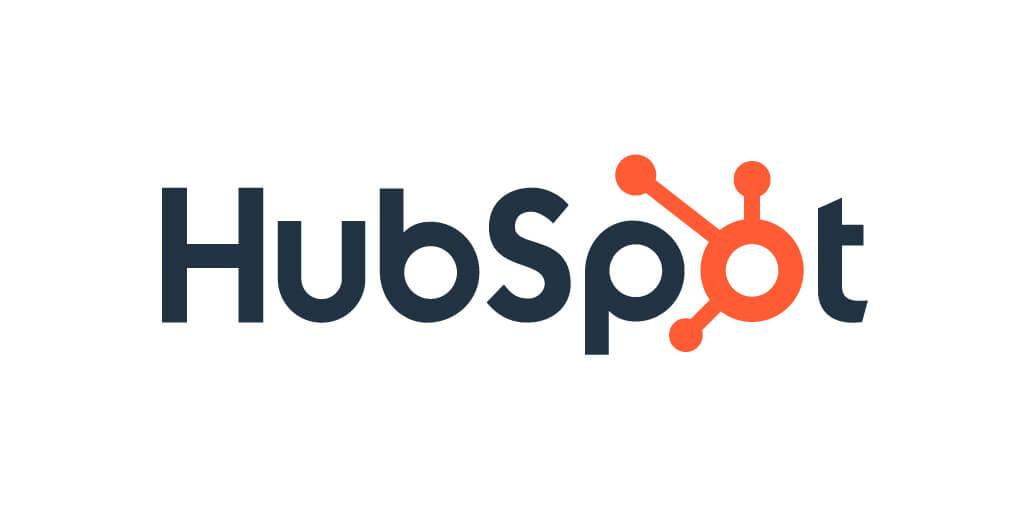
HubSpot’s GTM strategy success is largely due to its partnership with numerous marketing agencies worldwide. The company recognized the power of collaboration and established its Agency Partner Program, which involved inviting marketing agencies to leverage its platform to deliver inbound marketing services to their clients. They provided extensive training, resources, and support to agencies, enabling them to become experts in SaaS inbound marketing methodologies. This integration of the inbound marketing funnel approach allowed agencies to effectively attract, engage, and delight customers.
As a result, HubSpot’s reach expanded, and agencies were empowered to offer comprehensive solutions to their customers. This collaborative approach not only fueled HubSpot’s growth but also positioned the platform as the go-to solution for businesses seeking marketing expertise and technology.
Rippling

Rippling’s approach was akin to building a compound startup, where each success fueled the growth of the next. The company initially focused on solving a critical pain point for businesses – simplifying and automating HR and IT management. By offering a unified platform for employee onboarding, payroll, and IT provisioning, Rippling quickly gained traction among small and medium-sized businesses that were seeking efficiency.
However, Rippling didn’t stop there. Using the data and insights gathered from its HR and IT management solutions, it expanded its offerings to include employee benefits, such as health insurance and retirement plans, which strengthened its position as a comprehensive solution provider.
This compound startup approach enabled the company to continuously add value to its platform, attracting more customers and increasing its revenue streams over time.
8 Ways to Create a GTM Strategy
Now that we’ve set the stage with the fundamentals of a GTM strategy, let’s delve in deeper by exploring eight pivotal ways to craft a go-to-market plan that not only stands out but truly resonates.
1. Segment Your Market With Precision

Precision in market segmentation is foundational for aligning your product with the specific needs, behaviors, and characteristics of your target audience. Validating your business idea through a waitlist is a strategic move to ensure there’s a demand for your product. Moreover, early validation and precise segmentation allow for more focused and cost-effective marketing efforts, resulting in increased ROI. Besides, according to Seth Godin, one of the best-selling authors on the topic of marketing:
“If you’re marketing to everybody, you’re marketing to nobody.” – Seth Godin, Author and marketing expert
Application to Businesses: You can develop tailored marketing strategies and product features that will address the unique challenges of each segment. This will not only enhance customer satisfaction but also boost user acquisition.
Example: A B2B SaaS company specializing in project management software might segment its market by industry (e.g., tech, marketing agencies) and company size (e.g., SMBs, enterprises), then target those experiencing project oversight challenges.
2. Craft a Unique Value Proposition (UVP)

When crafting a UVP, it should clearly articulate the unique benefits and solutions your SaaS product offers. It needs to distinguish your product in a crowded market by highlighting the features and benefits that make it different and better than existing solutions. Doing this ensures that it resonates deeply with your segmented market in SaaS product marketing.
Research even shows that clarifying your value proposition is the most commonly selected GTM strategy change, which is a testament to the effectiveness of this approach[2]. Businessman Mark Cuban put it perfectly:
“Make your product easier to buy than your competition, or you will find your customers buying from them, not you.” – Mark Cuban
Application to Businesses: Develop a strong UVP to help differentiate your offering from competitors, attract and retain customers, and ultimately drive sales and business growth.
Example: A cybersecurity SaaS targeting small businesses might highlight ease of use and affordability as key components of its UVP, addressing common barriers for small businesses in adopting cybersecurity solutions. Utilizing cybersecurity SEO, they can effectively reach and engage their target audience by optimizing their online presence for relevant search terms.
3. Develop a Multi-Channel Engagement Strategy

A multi-channel engagement strategy involves identifying and utilizing a combination of digital and traditional channels that your target audience frequently uses, ensuring a comprehensive approach to engagement. This strategy also includes engaging with your audience early and frequently across these channels to improve your product based on their feedback. This will not only enhance your overall engagement strategy but also provide the insight you need to improve customer experience.
Application to Businesses: This strategy maximizes reach and engagement, driving higher conversion rates by interacting with potential customers through their preferred channels.
Example: A B2B SaaS offering cloud storage solutions could combine content marketing (for education), LinkedIn (for B2B networking), and direct sales outreach to effectively engage different segments.
4. Leverage Competitive Insights for Positioning

Competitive analysis can be a valuable tool to identify gaps in the market and position your product strategically. By leveraging insights derived from your competitive assessment, you can decide whether to adopt a product-led or sales-led approach based on your market’s preferences and competitive advantages. The goal is to find gaps in the market and position your product as either a premium or cost-effective solution. That said, by keeping an eye on emerging trends and competitors, you can continuously refine your positioning strategy.
Application to Businesses: Strategic positioning based on competitive insights can differentiate your product in a saturated market, attracting customers looking for specific features or benefits.
Example: A SaaS platform for remote team collaboration might find a unique angle by offering unparalleled integration capabilities with existing tools.
5. Implement an Agile Go-To-Market Plan

An agile GTM plan emphasizes rapid iteration and adaptation based on market feedback and changing conditions. It involves building an engaged audience base from the start through content marketing, social media, and community building, even before your product is fully developed. To take things a step further, you can even embed feedback loops with customers to ensure your GTM strategy remains aligned with market needs. This approach allows for continuous learning and adaptation.
Application to Businesses: Leveraging a robust CRM platform can help you effectively manage and nurture relationships with your audience throughout the product development process.
Example: A SaaS tool for digital marketers can quickly pivot its features based on user feedback on analytics and reporting capabilities.
6. Prioritize Customer Success and Retention

Focusing on customer success and retention requires utilizing strategies to ensure customer satisfaction, loyalty, and advocacy – factors often overlooked in traditional GTM plans. Prioritizing customer needs before and after purchase can help businesses build long-term relationships, reduce churn and drive positive word-of-mouth referrals. Ultimately, this leads to sustainable growth and profitability. Plus, proactive support, personalized communication, and value-added services are essential components of successful customer retention strategies. As Bill Gates, the former CEO of Microsoft, puts it,
“Your most unhappy customers are your greatest source of learning.” – Bill Gates
Application to Businesses: Investing in customer success initiatives leads to higher lifetime value and advocacy, which drives organic growth.
Example: Offering personalized onboarding sessions for a complex B2B SaaS product can significantly improve customer satisfaction and retention.
7. Optimize Your Pricing Model

Optimizing your pricing model requires aligning your pricing strategy with the value your product delivers. This means taking into consideration innovative pricing strategies that scale with customer usage or success.
This core component of your go-to-market strategy should reflect customer value perception and market demand. It may involve implementing different pricing models, such as subscription models, freemium strategies, or dynamic pricing. It’s also important to continuously test and refine your pricing strategy based on customer feedback and competitive dynamics.
Application to Businesses: Leveraging dynamic pricing software gives you access to advanced analytics and pricing optimization capabilities to help you adapt your pricing flexibly based on customer usage or success metrics.
Example: ClassPass, a SaaS platform that connects users with various fitness classes and wellness services, utilizes data on user engagement and class preferences to offer flexible membership plans. By analyzing user activity and feedback, ClassPass provides tiered subscription options that allow users to customize their fitness journey. These options range from basic access with a limited number of classes per month to premium memberships with unlimited classes, special wellness experiences, and guest passes.
8. Foster a Data-Driven Culture
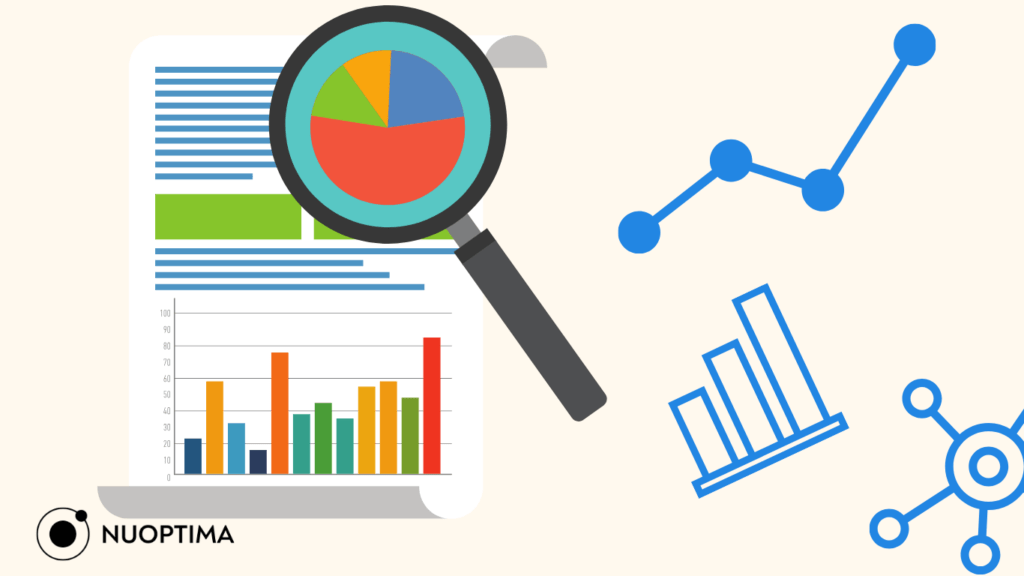
Fostering a data-driven culture within your organization means making decisions based on data insights rather than intuition. This requires actively testing growth channels and activities to identify what works best for your product, using data to focus your efforts on high-impact strategies, and continuously optimizing your GTM plan.
To effectively adopt a data-first culture, it is essential to invest in tools and training that can enable your team to effectively collect, analyze, and act on data.
Application to Businesses: Regular data review meetings can help bring together key stakeholders from different departments to review data metrics, discuss insights, and make data-driven decisions. By creating a dedicated forum for data analysis, you can cultivate a culture where data insights inform strategic initiatives and drive continuous improvement.
Example: Drawing inspiration from Spotify’s mastery in using data to craft personalized playlists, we’re reminded of the power of historical success stories in shaping our GTM strategies. Spotify’s success, rooted deeply in understanding and catering to individual user preferences, showcases how leveraging past insights and innovations can illuminate the path to future breakthroughs.
Our Top Go-To-Market Strategies for SaaS Success
Over the last four years, NUOPTIMA has worked with more than 60 category-leading businesses, won multiple awards and established ourselves as one of the leading SaaS growth agencies in the UK and the US.
We’ve had the chance to observe a lot of different go-to-market strategies, so here are our top 3:
Personal Network Outreach for Your First 10 Customers
Strategy Insight: Leveraging your personal network can be a goldmine for securing those crucial first customers. It’s about tapping into the relationships you’ve built over the years and presenting your solution to solve real problems they face.
Why It Works: It’s personal and direct, making it easier to get honest feedback and early adopters on board.
LinkedIn Marketing: Content Posts and Outreach
Strategy Insight: LinkedIn stands out as a powerhouse for B2B engagement. Through strategic content posts that add value and personalized outreach or InMails, you can significantly increase your visibility and credibility, particularly when you focus on building your personal brand on LinkedIn.
Why It Works: LinkedIn’s professional environment is perfect for B2B SaaS, allowing for targeted outreach and content sharing that resonates with your ideal customer profile.
Webinars and LinkedIn Ads for Maximum Engagement
Strategy Insight: Hosting webinars on topics that matter to your target audience, combined with running LinkedIn ads to promote them and retargeting interested users, creates a powerful funnel for lead generation and engagement.
Why It Works: Webinars provide value and establish your authority, while LinkedIn ads ensure your webinar reaches a wider yet targeted audience.
Invest in the Services of Full-Stack Growth Agency NUOPTIMA
When it comes to driving business growth through strategic go-to-market initiatives, NUOPTIMA is your dedicated partner. As a leading SaaS growth agency, we specialize in equipping businesses with the right strategies to kickstart their journey or elevate their existing efforts.
We have a track record of success, having helped many businesses penetrate the market and achieve their growth objectives. A prime example is our collaboration with FUL, a spirulina sparkling beverage brand. Through targeted GTM strategies, we facilitated FUL’s market entry, increased brand awareness, and significantly boosted sales.
Hence, partnering with NUOPTIMA means having access to expert guidance, innovative tactics, and tailored solutions designed to drive tangible results. By thoroughly analyzing your market and competitive land space, we’ll help you navigate the multiple GTM plans and choose strategies that work best for your business. Whether you’re launching a new product or seeking to optimize your market presence, our team is dedicated to delivering impactful outcomes for your business.
Ready to unlock your full growth potential? Book a free discovery call today and embark on your journey to success.
Conclusion
Developing an effective go-to-market plan is crucial for companies looking to introduce their products or services successfully into the market. By aligning marketing, sales, and distribution efforts with market opportunities, businesses can take advantage of growth prospects and accelerate their market expansion. Additionally, leveraging innovative tactics such as communicating a unique UVP, meticulous market segmentation, multi-channel engagement, and community building can help build an engaged and eager audience base, even before the product launch.
Ultimately, though, businesses must continuously refine their GTM strategies based on market feedback and performance data to drive sustainable growth and market success. With careful planning and execution, a well-crafted GTM strategy can position businesses as leaders in their respective industries and drive long-term success.
To learn more about this, here is a YouTube video from our CEO Alexej Pikovsky featuring a step-by-step guide on creating a successful GTM plan.
Additionally, if you’re looking to elevate your marketing efforts, partnering with a skilled Facebook Ads agency can significantly enhance your customer acquisition strategies, ensuring a strong market presence.
FAQ
A marketing strategy is a comprehensive plan that outlines the long-term marketing efforts required to achieve a business’s goals. It mainly focuses on how to reach potential customers and convert them into loyal, returning users. On the other hand, a go-to-market strategy encompasses all aspects of bringing a product to the market, including sales, distribution, pricing, and customer engagement.
A GTM manager is responsible for overseeing the implementation of a company’s GTM strategy. They carry out market research to identify target audiences, develop marketing and sales plans, manage distribution channels, and measure performance metrics to ensure successful product launches and market penetration.
To create a successful go-to-market plan, you’ll need to begin by defining your target audience and understanding their needs. Next, create a compelling value proposition that sets you apart from your competitors, decide on pricing and distribution strategies, and outline marketing and sales tactics that will help you reach your target audience. Finally, establish metrics to measure the success of your plan and continuously refine and adapt your approach based on market feedback and performance data.

